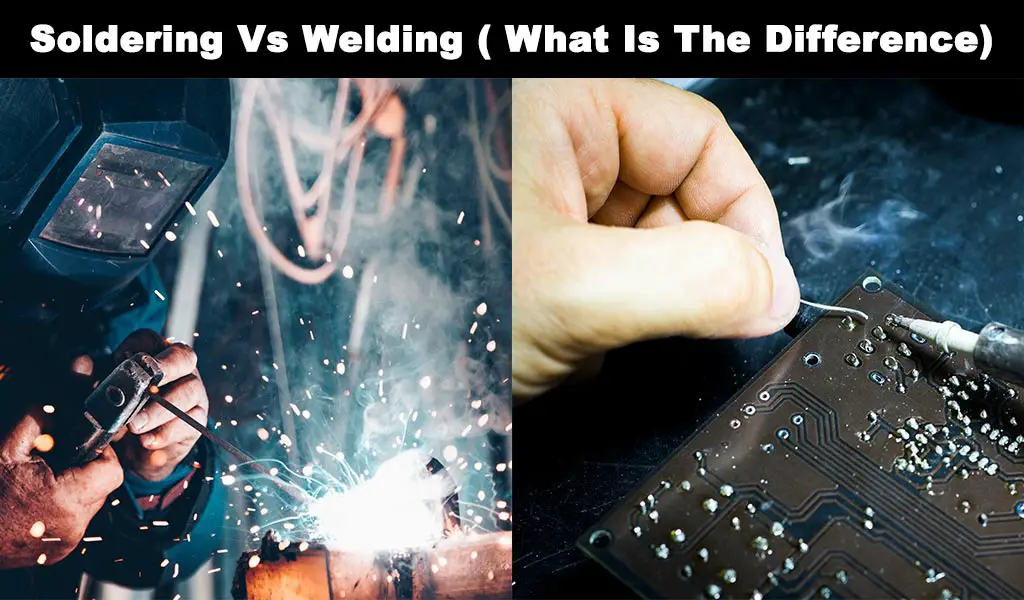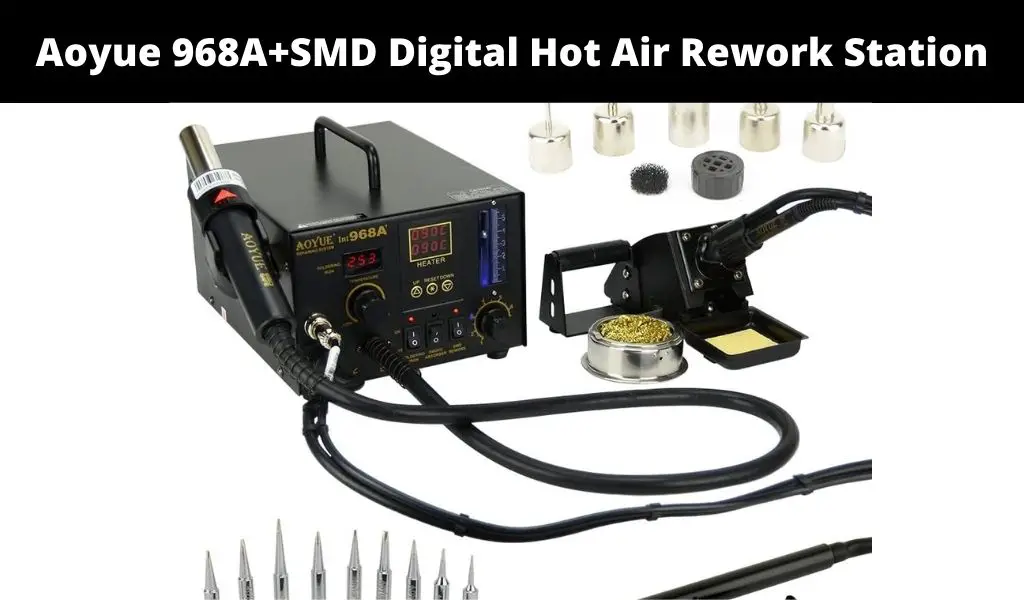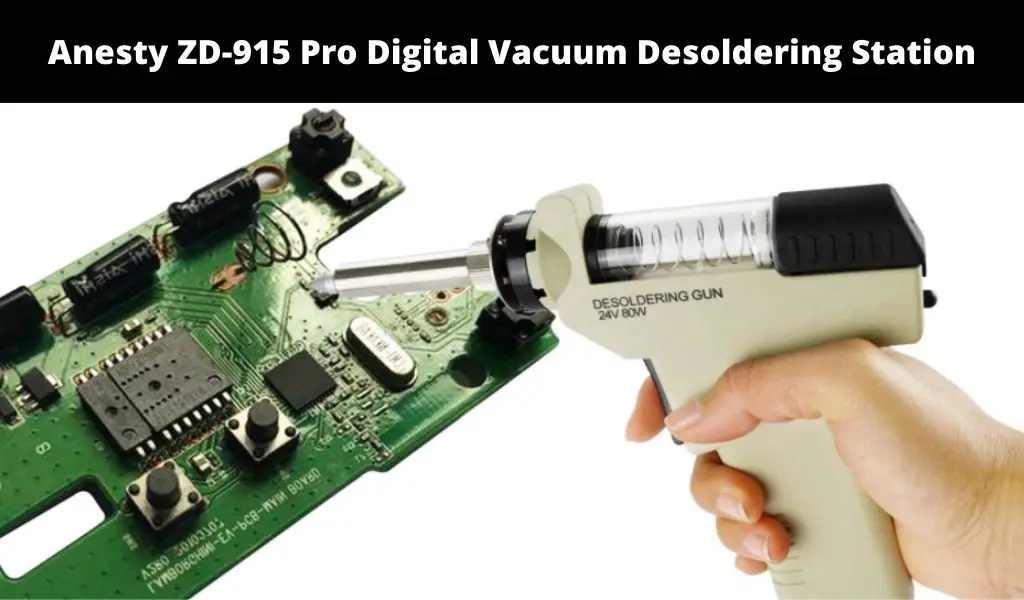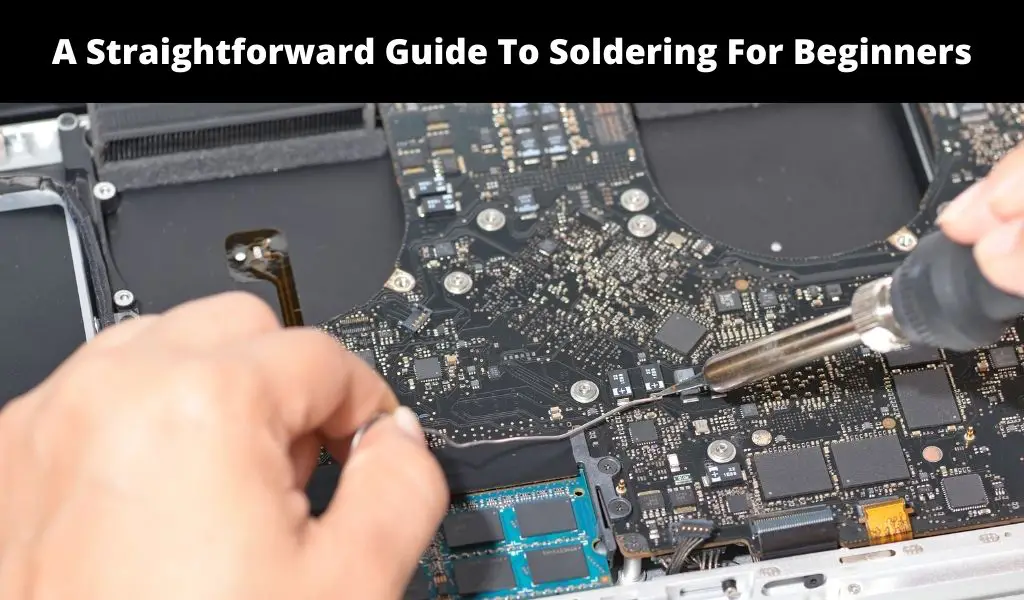If you care to read a detailed guide covering all there is to know on soldering vs welding, you are in the right place! We’ve done extensive research and summarized the differences below.
Soldering vs Welding. What is the difference?
Both processes are used for joining metals together. However, the main difference lies in how it is done. When soldering, a metal fabricator heats the metal being bonded but never melts the metal. In welding, the base metal is melted. As per the AWS (American Welding Society), soldering is a liquid-solid bonding process.
There’s more to the main difference and several other differences between soldering and welding below.
Differences in Purpose
The main purpose of welding is to create a strong bond between metals. The bond should be capable of withstanding just about any kind of strain and stress. For instance, a car’s body is welded to ensure the car stays intact even after a lot of strain and stress is exerted.
Soldering, on the other hand, is done to connect metals electronically. A solder is softer than a weld and comes typically in reels and tubes.
Differences in Process
Welding is done via a process known as fusion – a term common in sheet metal fabrication used to describe joining metals with similar characteristics (melting points and compositions). During welding, a weld pool (molten material) is formed. The pool joins metals together when it cools down and forms a joint. The joint is usually stronger than the metal base. During welding, some pressure is used to help in weld production.
Welding also needs a shield to protect the filler metal from contamination or oxidation – a process that causes loss of electrons and rusting on metals. Welders also need a shield to protect their eyes from the intense light produced when welding as well as resulting sparks and debris.
Soldering doesn’t produce intense light, debris, or sparks that you need to protect yourself from. A heat source simply melts the solder and joins two conductors together. No pressure is required, as is the case with welding.
Differences in Metals Being Joined Together
In welding, the two metals being joined together must have similar properties. For instance, steel and copper can’t be welded together. However, soldering can join different metals together. Different metals like gold, copper, silver, iron, and brass can be soldered together.
Differences in Temperature
Welding is a high-temperature process. You need approximately 3,600 degrees Celsius (or 6,500 degrees Fahrenheit) to weld. Soldering requires much lower temperatures, i.e., 450 degrees Celsius or 840 degrees Fahrenheit.
Both processes also have different preheating conditions. For instance, you don’t need to preheat a workpiece during welding as welding happens at a very high temperature. Workpieces must be heated when soldering to make a high-quality joint.
Temperature differences can also be explored in heat treatment. During welding, heat treatment is needed to remove undesirable effects. Soldering doesn’t need heat treatment.
Differences in Strength
If metals are welded together perfectly, the resulting weld is usually stronger than the surrounding metal. Other factors affecting the strength of a weld include too much heat. Excessive heat can change the characteristics of a metal.
Soldering usually results in joints that are weaker than welds. The bond is usually for conductive purposes as opposed to strength. Even if soldering is done properly and welding is done badly, the resulting strength of a soldered joint will always be weaker than a welded joint.
Difference in Mechanical Properties
Since welding involves high temperatures and cooling, the mechanical properties of metals being joined together (especially base metals) can change. Soldering, which happens in way lower temperatures than welding, doesn’t change the mechanical properties of metals being joined together.
Differences in Skill Requirements
Welding is more specialized than soldering. As a result, welders must be trained and skilled. Soldering can be done by anyone, really.
Differences in Types
Types of soldering
I. Brazing: Brazing requires a generally higher temperature than the other types of soldering below. The materials being soldered together must be heated adequately for perfect bonding.
II. Hard/silver soldering: This type forms stronger connections compared to other soldering types (like soft soldering). The soldering is done using brass or silver. A blowtorch is used to boost the temperature of the main metal and create a stronger joint.
III. Soft soldering: This type is common for certain applications (mostly plumbing and electronics). Soft soldering is common for connecting electrical components and creating electrical connections in circuit boards. This process requires the lowest melting point metals. Fillers are generally alloys.
Types of Welding
I. Electric resistance welding: This type of welding connects metal parts permanently together by initially heating them using electricity. Electrical resistance welding melts metal at a joint. The method is common in manufacturing steel pipes and motor vehicle assembly. Electricity is fed to electrodes that have a clamping pressure or work by reducing the external magnetic field. Electric resistance welding can be categorized further depending on the method used to apply pressure to a joint or the weld geometry i.e., flash welding, seam welding, spot welding, and projection welding.
II. Electroslag welding: This process is more advanced and used to join thin edges of two metals together vertically. Electroslag welding happens in between two edges of metal plates as opposed to happening outside a joint. When welding, a copper electrode is fed via a consumable guide tube that acts as a filler metal. Electricity is then applied to create an arc. A weld is formed from the bottom, moving up slowly. Electroslag welding is automated (done by machine).
III. Flux-cored arc welding: When welding, filler metal and the wire acting as an electrode are fed via a wand. This welding process is preferable for heavier and thicker metals since it is done under high heat. Flux-cored arc welding is common when repairing heavy equipment. The process is efficient with minimal waste. It is also cost-effective since it doesn’t involve using external gas. However, some clean-up is required to get rid of the little slag produced in the process.
IV. Gas metal arc welding: This welding method utilizes an electrical arc forming between the metal workpiece and consumable wire electrode to form a strong fuse. The method has subtypes like metal active gas & metal inert gas.
V. Gas tungsten arc welding: This method (popularly known as GTAW utilizes a tungsten electrode that is non-consumable. GTAW stands out as one of the few welding types that don’t require filler material. Only two metals are needed for welding. While a filler metal can be added if desired, it’s not a requirement. However, you need a gas tank to provide gas constantly to safeguard the weld. This requirement makes it better to weld indoors away from elements that can alter the outcome.
What’s more, GTAW results in very clean joints. It’s also among the few types of welding that have visually appealing final welds with no spatter. However, experienced welders are required for the best result.
VI. Oxy-fuel welding: This welding process utilizes oxygen and fuel gases to cut or weld metals together. Oxy-fuel welding was first developed by French engineers Charles Picard & Edmond Fouche in 1903.
VII. Shielded-metal arc welding: This welding method dates back decades (started in the 1930s). However, shielded-metal arc welding is still in use today. The method is also being updated constantly and remains popular for its simplicity and cost-effective nature. Shielded-metal arc welding is also easy to learn. However, it comes with some notable cons, like untidy welds since it splatters easily. As a result, clean-ups are necessary.
When welding, a replaceable electrode serves as a filler. The welding creates an arc connecting the electrode filler and base metals together. The electrode is coated to create gas when heated. The flux coating also protects metal from oxidation.
This welding method doesn’t need gas. It is, therefore, suitable for outdoor welding applications even under extreme weather (like rain and wind). Shielded-metal arc welding is also suitable for painted, dirty, or rusted surfaces. This property makes it perfect for equipment repair applications. Shielded-metal arc welding also works with different electrodes making swapping easier. It’s also easy to weld different metals together. However, thin metals shouldn’t be welded using this method. Like gas tungsten arc welding, shielded metal arc welding requires highly skilled welders to get the welding done right.
VIII. Submerged arc welding: SAW is a special type of welding whose joining process involves electric arc formation between the workpiece being welded and an electrode being fed continuo
Conclusion: Soldering vs Welding
The above information summarizes soldering vs welding in the most notable aspects. The difference between the two metal joining methods is best explored by defining the methods and exploring the differences in types, purpose, process, temperature, strength, mechanical properties, the skill required, and metals that can be used alongside the methods. While there may be other differences that aren’t covered above, the information covers all the basics.






